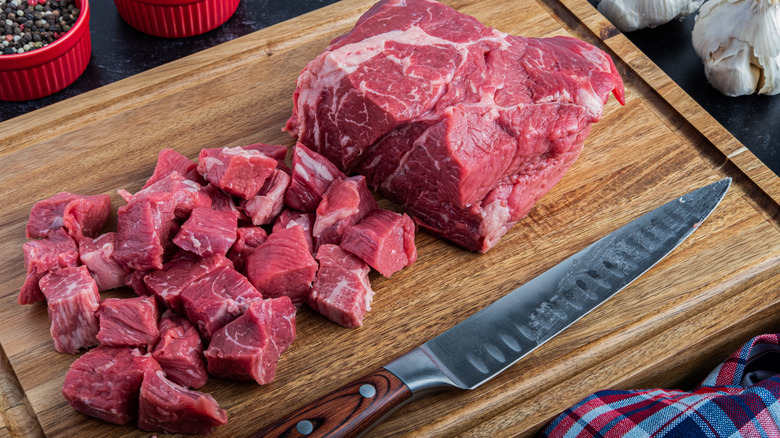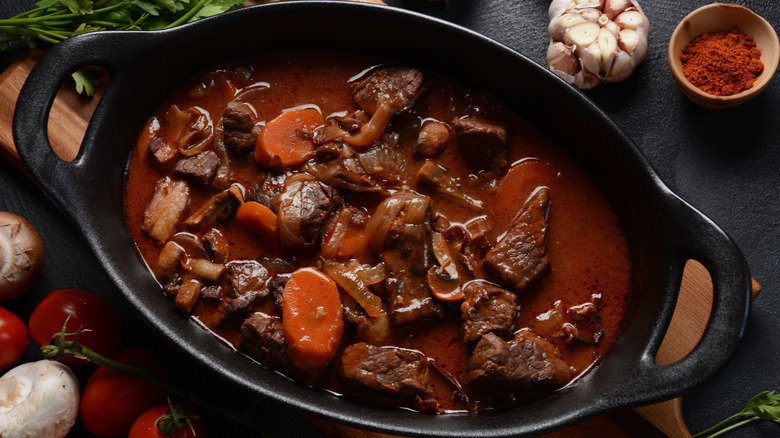This Is The Best Way To Make Beef Chunks Tender
Sinking your teeth into buttery chunks of tender beef is one of life's greatest pleasures. That said, struggling with a hunk of beef that's more akin to leather is an experience many of us try to avoid. What's the secret for perfectly tender chunks of beef? A few things – and each culinary technique is easier than the last, ensuring a winning, tender meal every time.
First, let's point out that we're referring to meat intended for stew, which is typically the beef from a cow's front shoulder, also known as chuck (via Taste of Home). Cuts of meat like chuck come from working muscles, so they're loaded with connective tissue, which makes the meat flavorful, but also tough and quite chewy (via Blue Sky Ranch). According to Serious Eats, chuck is made up of many different muscles which when cut-up can yield irregular pieces (some lean and tough, some fatty and tender). However, it's the preferred meat for stew because it's inexpensive, easy to find, and predictably awesome.
Three easy steps for tender beef every time
Taste of Home asserts that physically tenderizing beef before cooking is imperative for breaking down the tough muscle fibers and producing melt-in-your-mouth meat. They suggest lightly pounding the beef with the rough side of a meat mallet or scoring the surface with a sharp knife (creating a crosshatch pattern), or "forking" the meat all over, creating several small holes.
The next important step is searing the meat. It doesn't matter if your recipe calls for dredging the beef in flour, coating the cubes with herbs and spices, or simply seasoning them with salt and pepper, sear the meat in a hot, oiled, uncrowded pan until all sides are deeply browned; this process creates a caramelized crust that lends unrivaled richness and depth to the dish (via Allrecipes).
The last step requires patience. Livestrong explains that stewing beef in liquid, over low heat, for a long time, softens the tendons, and the collagen in the connective tissue melts into a gel, tenderizing the tough muscle meat. The Kitchn adds that rushing the cooking process will produce sturdy, chewy beef, so sit back, relax, and plan on a minimum of 2 hours before diving in. If you're using a slow cooker, plan on eight hours with the dial set on low (via Dinner Then Dessert).

